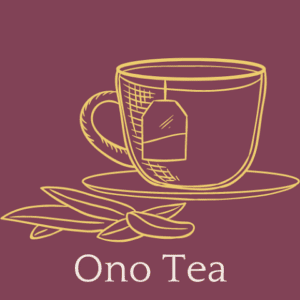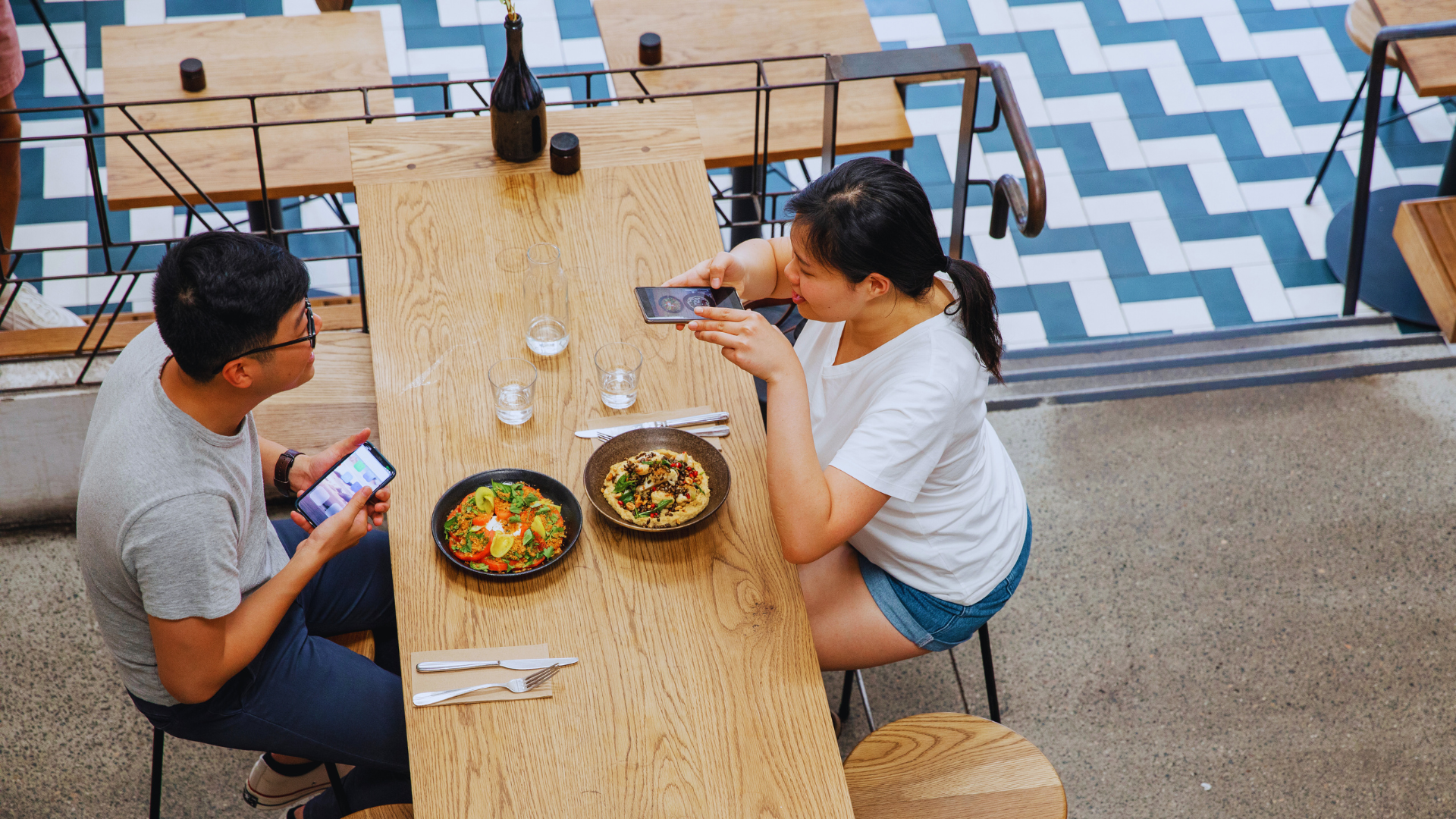For foodies, a meal is more than sustenance—it’s an art form, a sensory journey that weaves flavors, textures, and aromas into moments of delight. From savoring a perfectly seared scallop to indulging in a rich chocolate tart, every bite tells a story. But what if the perfect beverage could elevate that story? Enter tea, the unsung hero of gourmet dining. At Onotea, we believe tea is not just a drink but a culinary partner that enhances and harmonizes with the flavors of a meal.
Unlike wine, which can dominate delicate dishes, or water, which offers no flavor contrast, tea brings nuance, balance, and versatility to the table. Its diverse profiles—earthy, floral, smoky, or citrusy—make it an ideal companion for everything from spicy curries to creamy desserts. In this article, we’ll explore why tea is a foodie’s secret weapon, the principles of tea pairing, and our top tea recommendations to complement gourmet meals. We’ll also share brewing tips, pairing rituals, and insights from culinary enthusiasts who use tea to transform their dining experiences. Whether you’re hosting a dinner party or savoring a solo meal, these unique tea pairings will awaken your palate.
Why Tea? The Foodie’s Culinary Companion
Tea has been a cornerstone of culinary traditions for centuries, from Chinese dim sum to British afternoon tea. Its versatility lies in its complexity: a single leaf can yield flavors that are bold or subtle, sweet or savory, bright or grounding. For foodies, tea offers a way to enhance a dish without overpowering it, creating a dialogue between food and drink that elevates both.
Tea’s benefits extend beyond taste. It aids digestion, cleanses the palate, and provides a caffeine-free or low-caffeine alternative to coffee or alcohol, making it ideal for multi-course meals. The act of sipping tea also slows the dining experience, encouraging mindfulness and appreciation for each bite. Scientifically, tea’s polyphenols and tannins interact with food’s fats, proteins, and spices, balancing richness, cutting through grease, or amplifying umami.
To master tea pairing, foodies must understand the principles of flavor harmony. Let’s explore how to match tea with food for a gourmet experience.
The Art and Science of Tea Pairing
Pairing tea with food is both an art and a science, guided by principles of balance, contrast, and enhancement:
- Match Intensity: Pair bold teas with robust dishes and delicate teas with subtle flavors. A smoky Lapsang Souchong complements grilled meats, while a floral jasmine tea enhances light seafood.
- Contrast Flavors: Use tea to offset a dish’s dominant notes. A bright, citrusy tea can cut through creamy sauces, while an earthy tea grounds spicy dishes.
- Enhance Notes: Choose teas that amplify a dish’s key flavors. A nutty oolong pairs with roasted vegetables, reinforcing their caramelized depth.
- Cleanse the Palate: Teas with astringency or herbaceousness, like green tea or peppermint, refresh the palate between bites, ideal for multi-course meals.
- Consider Temperature: Hot teas enhance warm dishes, while chilled teas complement cold or spicy foods, balancing the dining experience.
Science supports these principles. Tea’s tannins bind to proteins in rich foods, reducing heaviness, while its volatile compounds (aromas) interact with food’s flavor molecules, creating new sensory experiences. With these principles in mind, let’s explore our top tea pairings for gourmet meals.
Top Tea Pairings for Gourmet Meals
At Onotea, we’ve curated tea blends and single-origin teas to complement a range of gourmet dishes. Each pairing is designed to enhance flavor, texture, and dining pleasure. Here are our top recommendations, with tasting notes, pairing suggestions, and preparation tips:
1. Jasmine Pearl Bliss
- Tea Type: Green tea, jasmine-scented
- Flavor Profile: Delicate, floral, with a sweet, lingering finish
- Why It Works: Jasmine pearl tea’s floral notes and subtle astringency complement seafood and light vegetable dishes. Its gentle sweetness enhances delicate proteins like scallops or poached fish, while its cleansing quality refreshes the palate.
- Pairing Suggestions:
- Seared Scallops with Lemon Butter: The tea’s floral aroma elevates the scallops’ sweetness, while its astringency cuts through the butter.
- Cucumber and Avocado Salad: The tea’s lightness mirrors the salad’s freshness, creating a harmonious balance.
- Brewing Tip: Steep 1 teaspoon in 8 oz of water at 175°F for 2-3 minutes to preserve the delicate flavor. Serve hot or chilled.
- Foodie’s Testimonial: “Jasmine tea with scallops is a revelation,” says chef Elena Ruiz. “It’s like the dish and tea are dancing together.”
2. Lapsang Souchong Ember
- Tea Type: Black tea, smoked
- Flavor Profile: Bold, smoky, with hints of pine and caramel
- Why It Works: Lapsang Souchong’s robust, smoky profile stands up to hearty, savory dishes. Its tannins balance rich fats, and its smoky depth enhances grilled or roasted flavors.
- Pairing Suggestions:
- Grilled Ribeye with Herb Butter: The tea’s smokiness amplifies the steak’s char, while its tannins cut through the buttery richness.
- Mushroom Risotto: The tea’s earthy notes echo the mushrooms, creating a cohesive, grounding experience.
- Brewing Tip: Steep 1 tablespoon in 8 oz of water at 200°F for 3-4 minutes. Serve hot to enhance the smoky aroma.
- Foodie’s Testimonial: “Lapsang with steak is my go-to for dinner parties,” shares food blogger Javier Luna. “Guests are always impressed.”
3. Oolong Orchard Glow
- Tea Type: Oolong tea, semi-oxidized
- Flavor Profile: Nutty, floral, with stone fruit undertones
- Why It Works: Oolong’s complex profile bridges sweet and savory, making it versatile for roasted dishes and desserts. Its smooth mouthfeel complements creamy or caramelized flavors.
- Pairing Suggestions:
- Roasted Duck with Plum Sauce: The tea’s fruit notes enhance the plum, while its nuttiness grounds the duck’s richness.
- Peach Tart with Whipped Cream: The tea’s floral and stone fruit flavors amplify the tart’s sweetness without overwhelming it.
- Brewing Tip: Steep 1 tablespoon in 8 oz of water at 190°F for 4-5 minutes. Re-steep for a lighter second infusion.
- Foodie’s Testimonial: “Oolong with duck is pure magic,” says sommelier Maya Chen. “It’s like a wine pairing but more approachable.”
4. Rooibos Spice Harmony
- Tea Type: Herbal tea, rooibos-based
- Flavor Profile: Warm, spiced, with notes of cinnamon and vanilla
- Why It Works: Rooibos’s caffeine-free, earthy sweetness pairs with spicy or sweet dishes. Its warming spices complement bold flavors, while its smooth texture soothes the palate.
- Pairing Suggestions:
- Thai Red Curry with Shrimp: The tea’s sweetness tempers the curry’s heat, while its spices echo the dish’s complexity.
- Pumpkin Pie with Spiced Cream: The tea’s cinnamon and vanilla enhance the pie’s warmth, creating a cozy finish.
- Brewing Tip: Steep 1.5 teaspoons in 8 oz of water at 200°F for 5-7 minutes. Add a splash of almond milk for dessert pairings.
- Foodie’s Testimonial: “Rooibos with curry is a game-changer,” says home cook Priya Sharma. “It makes every bite more vibrant.”
5. Peppermint Citrus Cleanse
- Tea Type: Herbal tea, peppermint-based
- Flavor Profile: Cool, minty, with a bright citrus lift
- Why It Works: Peppermint’s refreshing quality cleanses the palate, making it ideal for multi-course meals or rich dishes. Its citrus notes enhance fresh, tangy flavors.
- Pairing Suggestions:
- Goat Cheese and Fig Crostini: The tea’s mintiness balances the cheese’s creaminess, while its citrus complements the figs’ sweetness.
- Lemon Sorbet with Fresh Berries: The tea’s cool brightness mirrors the sorbet’s tang, creating a refreshing finale.
- Brewing Tip: Steep 1 tablespoon in 8 oz of water at 190°F for 4-6 minutes. Serve chilled for dessert or hot for savory pairings.
- Foodie’s Testimonial: “Peppermint tea with crostini is so elegant,” shares caterer Liam Foster. “It keeps the meal feeling light.”
Brewing the Perfect Cup: Tips for Foodies
To ensure your tea enhances your meal, follow these brewing tips:
- Use Fresh Water: Filtered water preserves the tea’s nuanced flavors, ensuring it complements your dish.
- Mind the Temperature: Delicate teas (green, white) need 175-185°F, while black and herbal teas thrive at 190-200°F. Incorrect temperatures can mute flavors.
- Steep Precisely: Over-steeping creates bitterness that clashes with food. Use a timer to follow recommended steep times.
- Serve Thoughtfully: Match the tea’s temperature to the dish—hot for warm entrees, chilled for salads or desserts.
- Experiment with Infusions: For multi-course meals, brew a single tea at varying strengths (light for appetizers, bold for mains) to evolve with the menu.
For an elevated touch, serve tea in clear glassware to showcase its color, or pair with a small palate-cleansing sip between courses to reset the taste buds.
Tea Pairing Rituals for Gourmet Dining
Tea can transform a meal into a mindful, multisensory experience. Here are three rituals to enhance your gourmet dining:
- The Sensory Start: Before the meal, brew your tea and inhale its aroma. Take a small sip, noting its flavors, then taste your first bite. This ritual primes your palate for harmony.
- The Course-by-Course Pairing: Assign a different tea to each course—light jasmine for appetizers, robust oolong for mains, soothing rooibos for dessert. Sip between bites to cleanse and contrast.
- The Reflective Finish: After the meal, brew a calming herbal tea and reflect on the flavors and company. Journal your thoughts or share impressions with guests to deepen the experience.
Beyond the Plate: Tea for Culinary Creativity
Tea’s role extends beyond pairing—it inspires culinary creativity. Use tea in recipes, like steeping rice in jasmine tea or infusing desserts with rooibos. Sip tea while brainstorming menus or plating dishes to stay in a creative flow. Over time, tea becomes a muse for foodies, weaving flavor and intention into every meal.
Final Bites: Savoring Tea and Food
For foodies, dining is a celebration of flavor, and tea is the perfect partner to amplify that joy. At Onotea, we invite you to explore our teas and experiment with pairings that awaken your senses. Whether you’re savoring a multi-course feast or a simple homemade dish, let tea elevate every bite.

